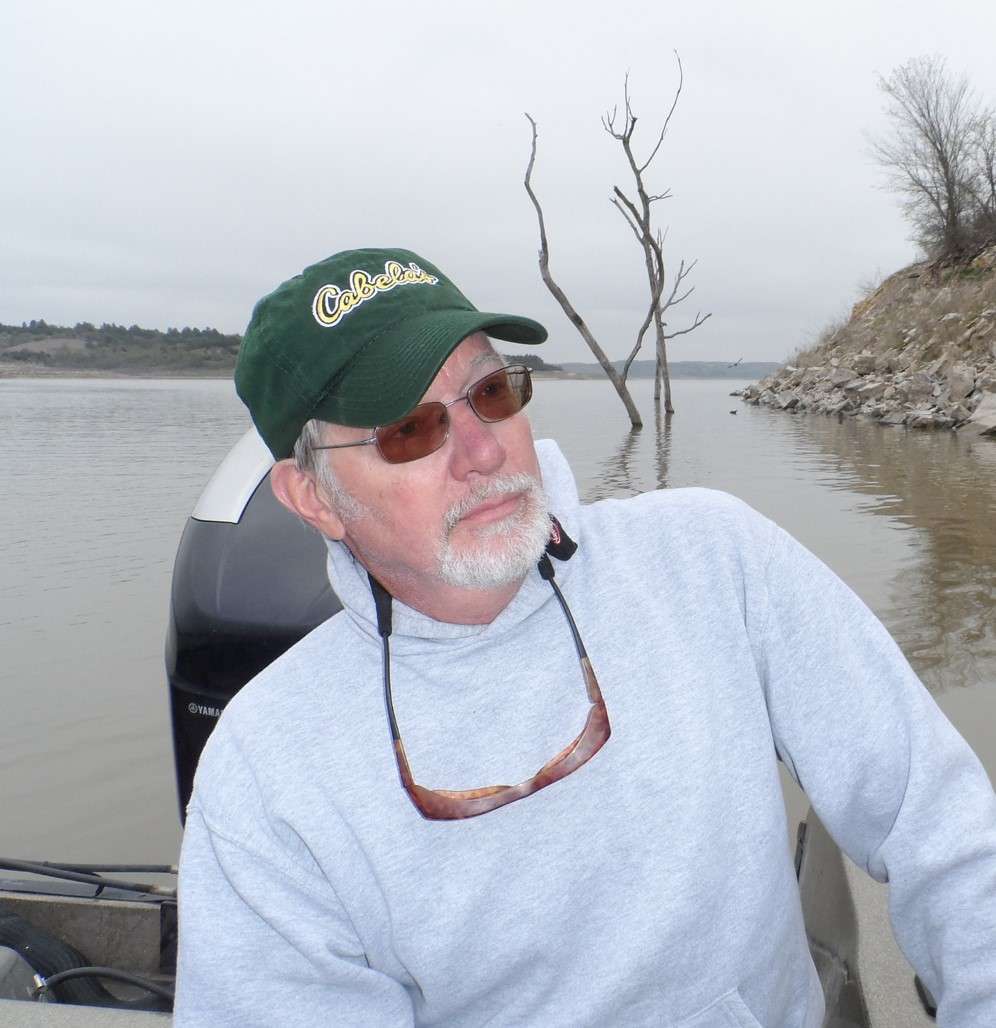For those of us fishermen without boats, good fishing can often be found in the rivers or streams below large reservoirs. As gates are opened to release excess water, both sport fish and bait fish also come through the gate, often making for great fishing below the dam. Successful fishing there below the dam depends a lot on timing, knowing when, and being there when more water than normal is being released from the lake above into the river or stream below. Bryan Sowards, Kansas Wildlife and Parks Fisheries Biologist for my area, provided me with information and charts to better help explain how water levels are managed in our Kansas lakes.
Reservoir surface elevation can give an angler an overview of what current conditions to expect and recent trends that might dictate fish behavior. Some terms to remember are “conservation pool,” “active pool,” “water releases,” and “discharge.” Conservation pool (a.k.a. active pool) is the target elevation that a dam is designed to hold during normal conditions and can be simplified as the typical target surface elevation, or normal lake level. Conservation pool is also considered the bottom of the flood pool. This level allows for consistent recreational opportunities while maintaining an adequate amount/volume for flood control during wet seasons. In eastern Kansas the surface elevation typically maintains or exceeds the conservation pool while western Kansas reservoirs typically are below conservation pool and only reach that elevation after periods of high rainfall.
Dam releases/Outflow
Water releases and discharge mean the same thing and are a measure, in cubic feet per second, of the volume of water being released from the dam every second. The release rate, when high, can be a good indicator of quality fishing conditions at the spillway below the dam and even further downstream. Moderate to high release rates, especially during the spring, provide excellent fishing opportunities for White Bass, Walleye and Sauger, catfish, Paddlefish, and other species as they move upstream to spawn and are often concentrated below dams.
Streamflow
The rivers and streams above reservoirs can also provide excellent angling opportunity as fish from the reservoir move upstream to spawn (e.g. White Bass in April). However, discharge from the dam and even current lake elevation aren’t necessarily the best ways to determine fishing opportunities upstream. For this, current streamflow at USGS gauging stations above these reservoirs should be monitored. Folks routinely monitor these gauging stations at their favorite White Bass spawning locations and Paddlefish snagging locations from March – April. However, high inflows above reservoirs can also provide quality catfish angling above the reservoirs through the spring, summer, and fall. Follow this link throughout the year for current streamflow data at your favorite rivers and streams: https://waterdata.usgs.gov/ks/nwis/rt.
Elevation levels and reservoir releases (outflow) for reservoirs in northeastern Kansas within the Kansas/Missouri River Basin are shown in the United States Geological Survey and U.S. Army Corps of Engineers websites with hydrographs while those for reservoirs in southeastern Kansas within the Arkansas River Basin, except Cheney, are shown with surface elevation diagrams. Elevation levels for reservoirs in western Kansas, including Cheney, are shown with slightly different surface elevation diagrams, referred to as teacup diagrams. The bottom line here is that Kansas reservoirs are managed by different jurisdictions of the Army Corp of Engineers, and each jurisdiction has its own way of illustrating current water levels and information about lakes in its jurisdiction, something even the biologists find confusing. To simplify this, Sowards sent me the following table. Obviously, it won’t work in a newspaper setting, but contact me and I’ll email you the table by itself. Simply HOLD DOWN the control button on your keyboard, HOVER your mouse over the number beside each lake and DOUBLE CLICK; this will give you all the above information about each lake without having to navigate all the different websites.
| KS/MO River Basin reservoirs | Elevation & release link | Arkansas River Basin reservoirs | Elevation & release link | Western Kansas reservoirs | Elevation & release link |
| Clinton | 01 | Big Hill | 10 | Cedar Bluff | 18 |
| Hillsdale | 02 | Council Grove | 11 | Cheney | 19 |
| Kanopolis | 03 | El Dorado | 12 | Glen Elder | 20 |
| Melvern | 04 | Elk City | 13 | Kirwin | 21 |
| Milford | 05 | Fall River | 14 | Lovewell | 22 |
| Perry | 06 | John Redmond | 15 | Norton | 23 |
| Pomona | 07 | Marion | 16 | Webster | 24 |
| Tuttle Creek | 08 | Toronto | 17 | ||
| Wilson | 09 |
Spring time fishing is upon us and my mouth waters at the thought of freshly fried fish. I hope this column helps you better understand water levels of Kansas lakes and how they are controlled. So take a kid fishing as you Explore Kansas Outdoors.
Steve can be contacted by email at stevenrgilliland@gmail.com.




